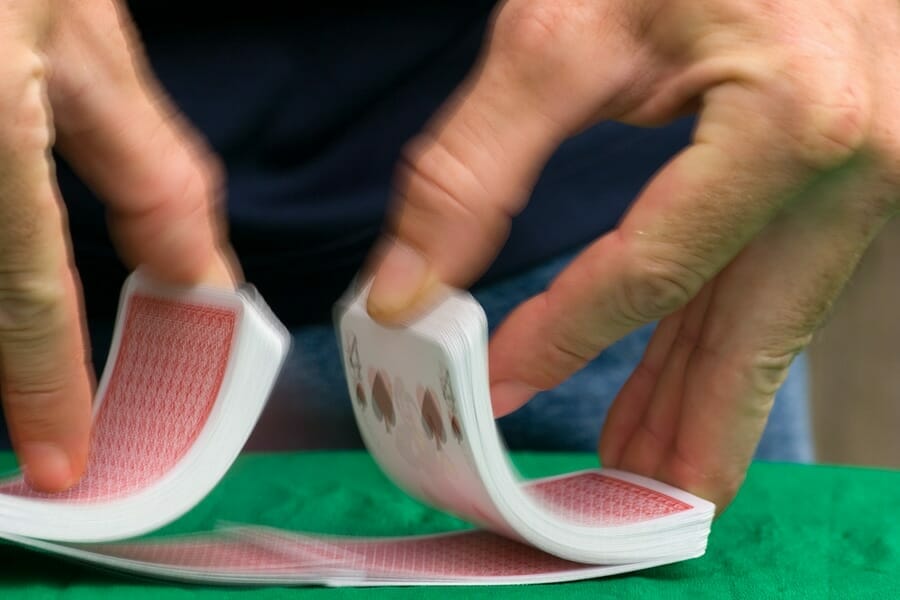Playing cards, trading cards and business cards are available at a strikingly similar size, but each came to this size for very different reasons.

When you decide to print flash cards online, there is a range of sizes you can choose, from as large of A7 to as small as a business card (55mm x 85mm).
This size, depending on the nuances of a printer, is the same as those used for printing playing cards, as well as trading cards and stickers, despite there being no universal standard for any of these and nothing stops a printer from making cards in any size outside of material costs.
The reasons for this take us to the early history of playing cards, the first of the three types of card to exist.
Search For A Standard
Playing cards, like most early game tools, have a somewhat complicated history as different cultures had their own sets of cards.
There has been evidence of playing cards around the 9th century AD in Tang dynasty China, although whether they are connected to the first sets of cards found in Europe is completely speculative.
The first confirmed deck of cards was mentioned in a 1377 manuscript and even as early as the 15th-century decks with 52 cards were known to exist.
Whilst they had very different designs and suits than those we see today, already the idea of four suits and a set of numbered cards plus additional court cards had taken hold, with Spain having a 40 card deck with seven numbered cards, a king, knight and knave.
The spread of the printing press throughout the 15th century also spread the rise of card games.
Woodcuts, metal engravings and copper enabled the mass production of playing cards in Germany, and Gutenberg’s press in 1440 meant that they could be printed even more efficiently.
The reason why playing cards use the designs they do is that they were based on French designs, which were the first to be produced in gigantic quantities.
The size ‘standards’ came several hundred years later, although even then they are somewhat up for debate.
The Card Revolution
The 19th Century would be where many of these card standards would form, although it is difficult to determine which entirely came first.
The predecessor to the business card is the visiting card, which came about in the late 18th century and became invaluable in the 19th century and Europe had a standard size of 55mm x 85mm.
Whilst there are variations of a millimetre or more in other regions, this size stuck and became the standard for business cards as the tradition of the visiting card diminished in the 20th century.
Trading cards came from a very similar standard, the carte de visite. Named after but largely unrelated to the visiting card outside of dimensions, these were photographs on cards that became major collector’s items.
These eventually began being sold in cigarette packets and by the middle of the 20th century had become a completely new industry.
As for playing cards, two very popular games in the United States, poker and contract bridge, had become very popular and led to two different kinds of playing card size.
The slightly narrower bridge cards were popular because that game relied on a large number of cards being in a player’s hand at once, and was important to see their value at a glance.
We offer flashcard printer service.
Looking for a reliable printing company?
Get an instant quote